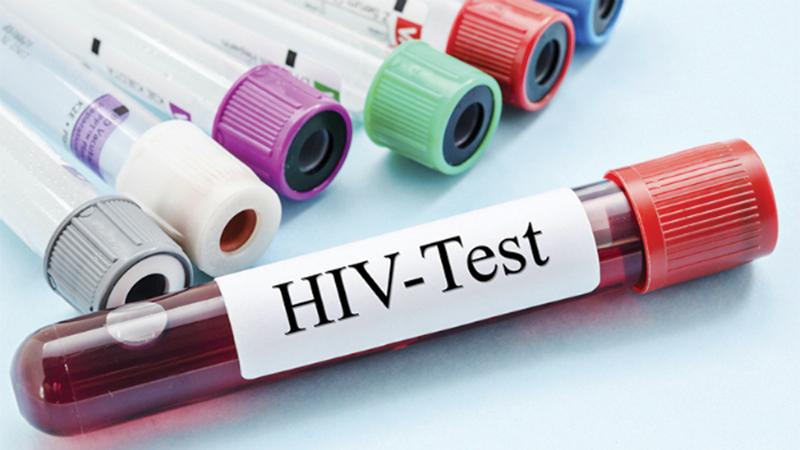
Key facts
• To reach the new proposed global 95–95–95 targets set by UNAIDS, we will need to redouble our efforts to avoid the worst-case scenario of 7.7 million HIV-related deaths over the next 10 years, increasing HIV infections due to HIV service disruptions during Covid-19, and the slowing public health response to HIV.
• HIV continues to be a major global public health issue, having claimed 40.1 million [33.6–48.6 million] lives so far.
• In 2021, 650 000 [510 000–860 000] people died from HIV-related causes and 1.5 million [1.1–2.0 million] people acquired HIV.
• There is no cure for HIV infection. However, with increasing access to effective HIV prevention, diagnosis, treatment and care, including for opportunistic infections, HIV infection has become a manageable chronic health condition, enabling people living with HIV to lead long and healthy lives.
• There were an estimated 38.4 million [33.9–43.8 million] people living with HIV at the end of 2021, two-thirds of whom (25.6 million) are in the WHO African Region.
Risk factors
Behaviour and conditions that put individuals at greater risk of contracting HIV include:
• having condomless anal or vaginal sex;
• having another sexually transmitted infection (STI) such as syphilis, herpes, chlamydia, gonorrhoea and bacterial vaginosis;
• engaging in harmful use of alcohol and drugs in the context of sexual behaviour;
• sharing contaminated needles, syringes and other injecting equipment and drug solutions when injecting drugs;
• receiving unsafe injections, blood transfusions and tissue transplantation, and medical procedures that involve unsterile cutting or piercing; and
• experiencing accidental needle stick injuries, including among health workers.
Prevention
People can reduce the risk of HIV infection by limiting exposure to risk factors. Key approaches for HIV prevention, which are often used in combination, include:
• male and female condom use;
• prevention, testing and counselling for HIV and STIs;
• voluntary medical male circumcision (VMMC);
• use of antiretroviral drugs (ARVs) for prevention (oral PrEP and long acting products), the dapivirine vaginal ring and injectable long-acting cabotegravir;
• harm reduction for people who inject and use drugs; and
• elimination of mother-to-child transmission (MTCT) of HIV.
HIV is not transmitted if a person’s sexual partner is virally suppressed on ART, so increasing access to testing and supporting linkage to ART is an important component of HIV prevention.
WHO response
Global health sector strategies on, respectively, HIV, viral hepatitis, and sexually transmitted infections for the period 2022–2030 (GHSSs) guide the health sector in implementing strategically focused responses to achieve the goals of ending AIDS, viral hepatitis B and C and sexually transmitted infections by 2030.
The 2022–2030 strategies recommend shared and disease-specific country actions supported by actions by WHO and partners. They consider the epidemiological, technological, and contextual shifts of previous years, foster learnings across the disease areas, and create opportunities to leverage innovations and new knowledge for effective responses to HIV, viral hepatitis, and sexually transmitted infections.
The strategies call for a precise focus to reach the people most affected and at risk for each disease that addresses inequities. They promote synergies under a universal health coverage and primary health care framework and contribute to achieving the goals of the 2030 Agenda for Sustainable Development.
The Seventy-fifth World Health Assembly requested progress reports on the implementation of the strategies in 2024, 2026, 2028 and 2031, noting that the 2026 report will provide a mid-term review based on the progress made in meeting the strategies’ 2025 targets.
The strategic directions of the GHSSs 2022–2030 are to:
• deliver people-centered evidence-based services
• optimise systems, sectors and partnerships for impact
• generate and use data to drive decisions for action
• engage empowered communities and civil society
• foster innovation for accelerated action.
As a founding cosponsor of the UNAIDS Joint Programme, WHO takes the lead on HIV testing, treatment and care, resistance to HIV medicines and HIV/TB co-infection. WHO jointly coordinates work with UNICEF on EMTCT of HIV and paediatric AIDS and works with UNFPA on the integration of SRHR and HIV. With the World Bank, WHO convenes actions to drive progress towards achieving universal health coverage, including, and with UNICEF, through primary health care. WHO also partners with UNODC on harm reduction and programs to reach people who use drugs and people in prison and other closed settings.
- WHO
